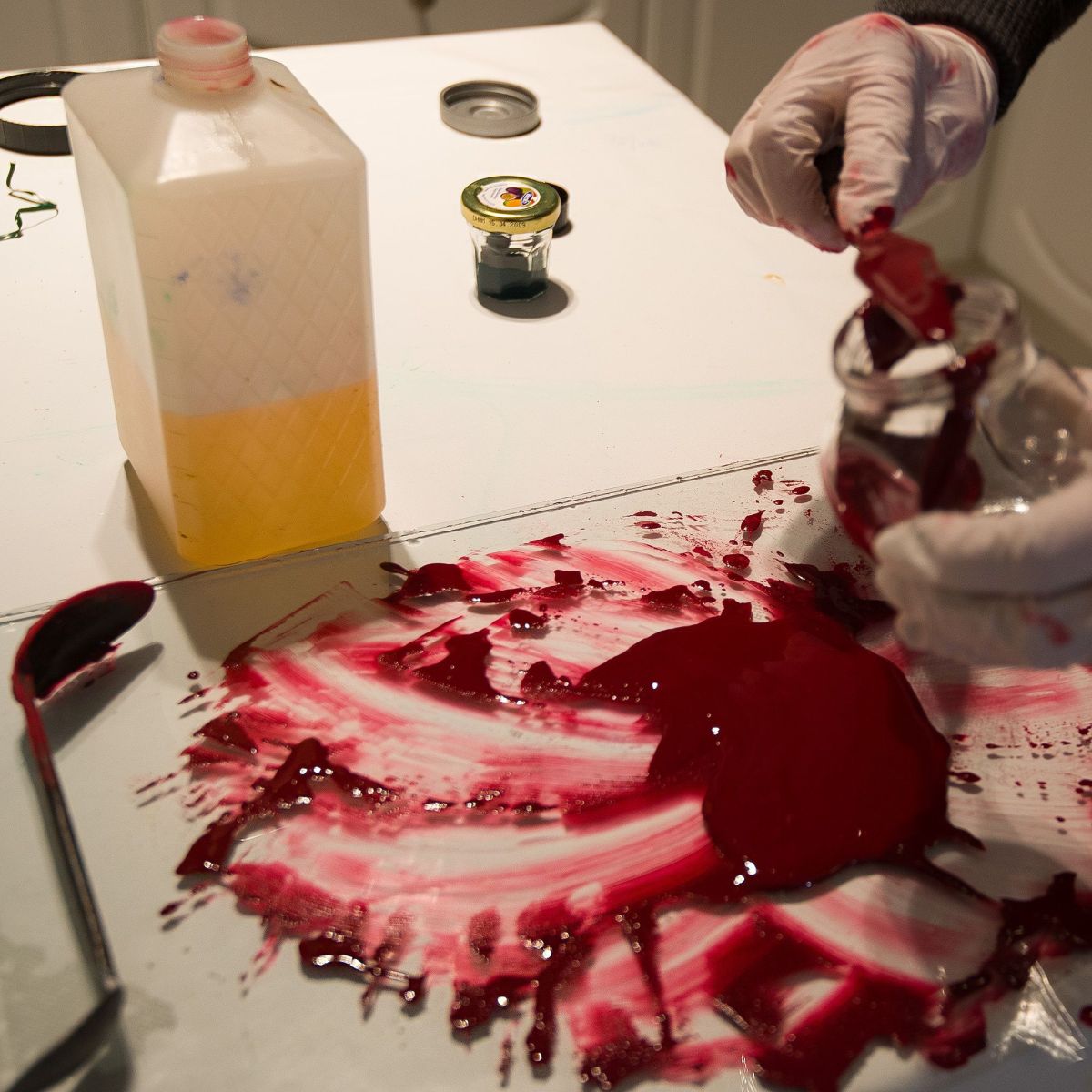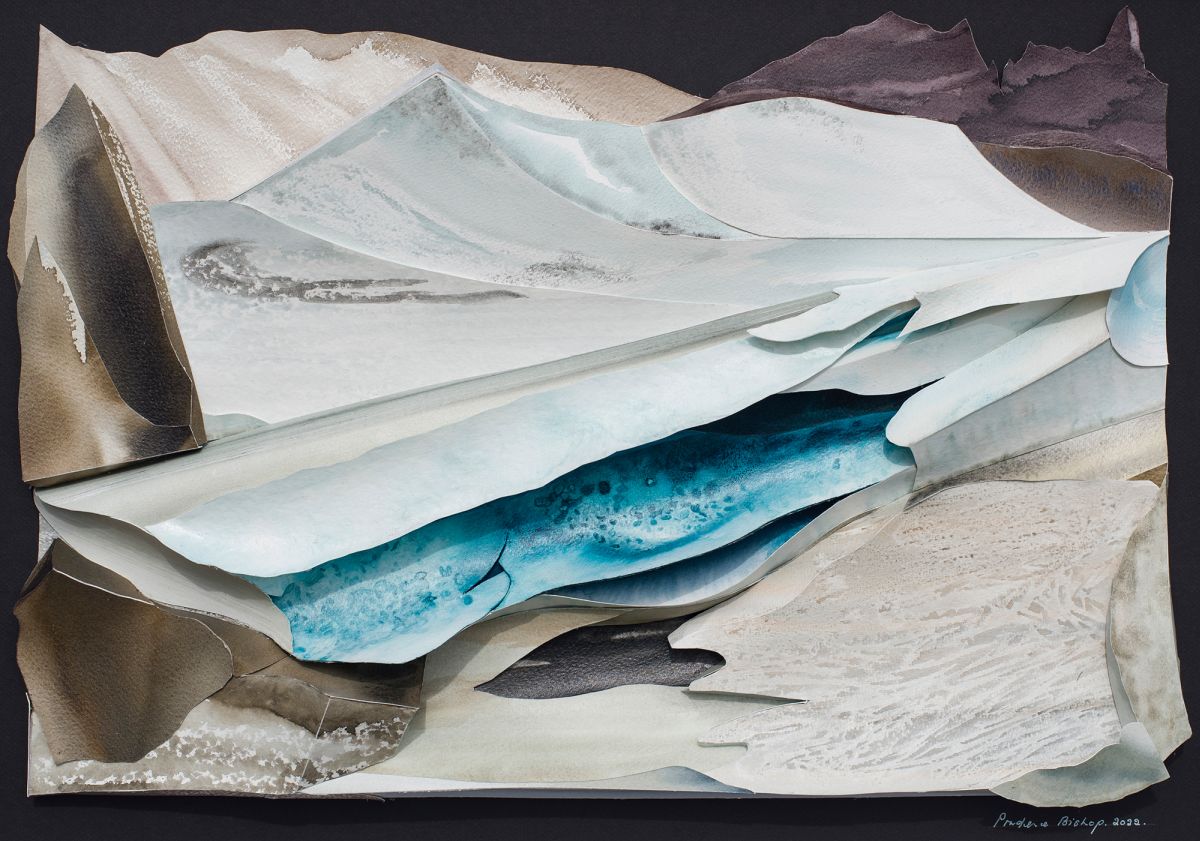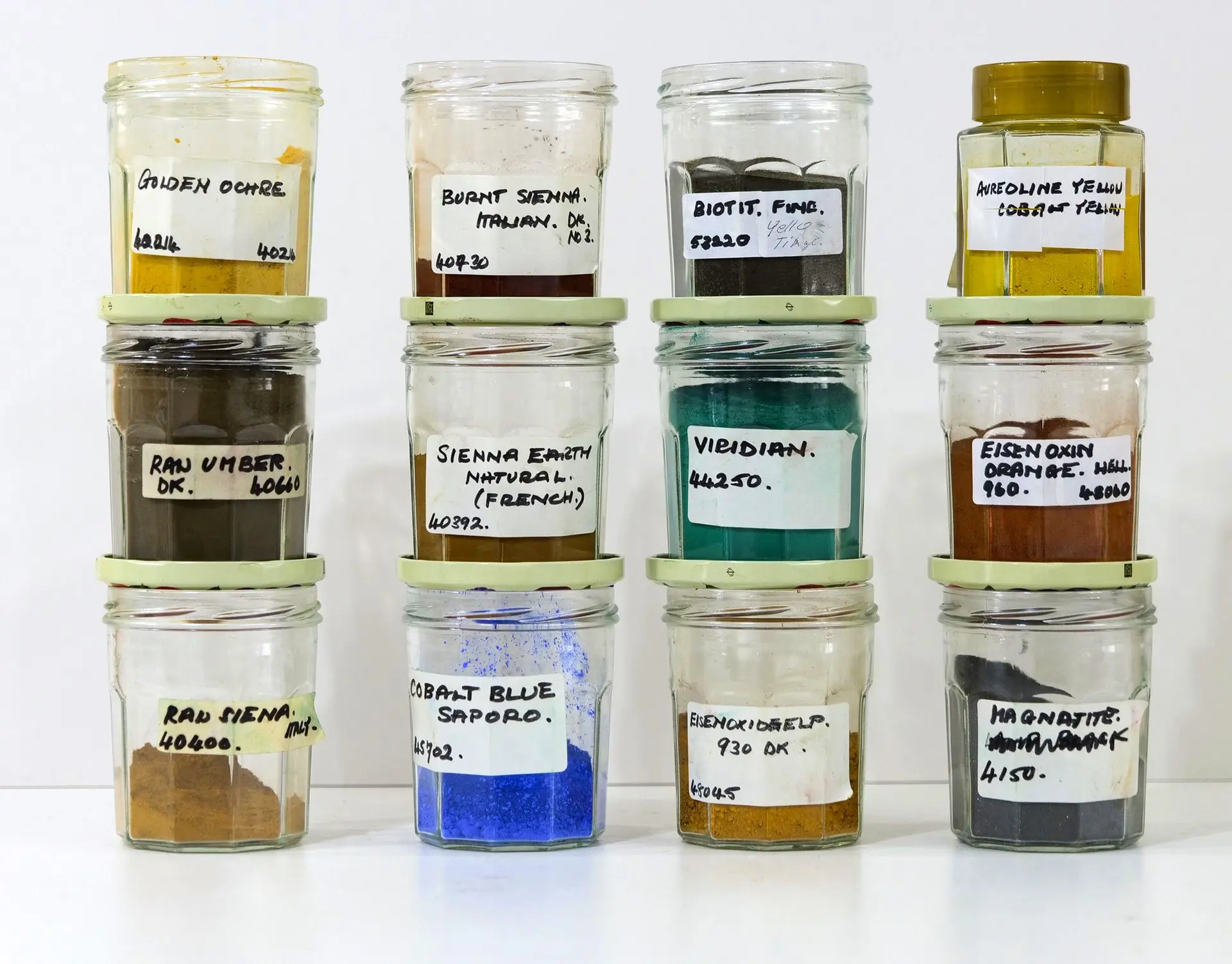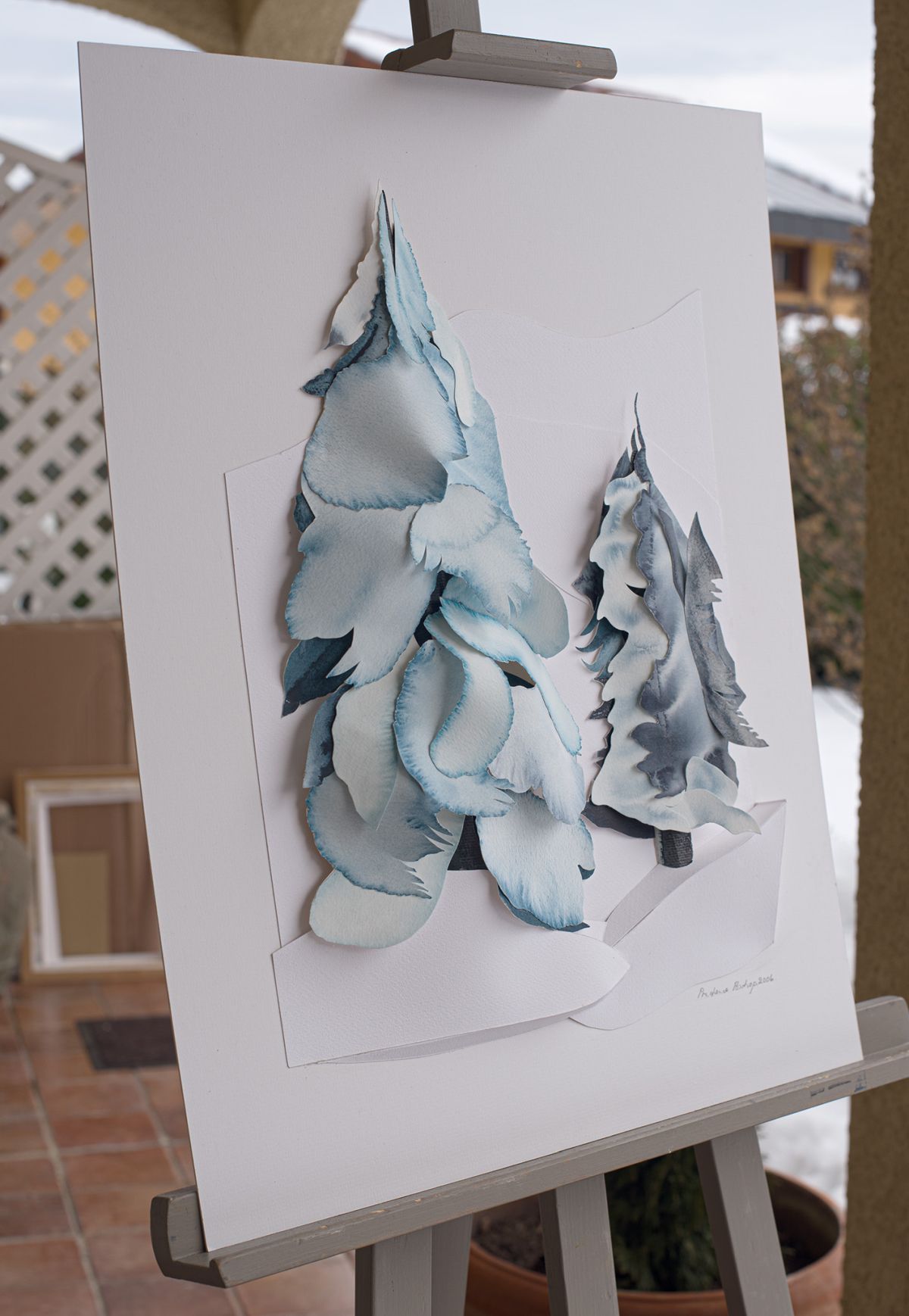The Materials: Traditional Meets Innovation
The Tools & Techniques That Bring Sculptural Watercolours to Life
“I follow the centuries-old traditions of watercolour painting while integrating layers, structure, and innovation to create something new.”
— Prue Bishop
Sculptural watercolour is more than just paint on paper—it is a carefully constructed, multi-layered composition. Every material used plays a vital role in the artwork’s longevity, structure, and visual harmony.
1️⃣ Honoring Watercolour Tradition
Watercolour has a rich artistic history, and Prue preserves traditional methods in her work.
✔ Paper sizes follow centuries-old standards—never joined or resized.
✔ Pigments are carefully chosen for their historical and natural integrity.
✔ The Three-Pigment Rule ensures colour balance and harmony.
Example: Turner’s Influence on Colour Mixing
Like the famous painter J.M.W. Turner, Prue follows a strict approach to colour:
- Three base pigments are used per painting.
- Complementary colours are subtly added to enhance depth.
- Sky and landscape always share hues for natural cohesion.

"If a rock has blue in it, that same blue will appear in the sky. This is what makes the painting feel alive."
2️⃣ The Materials That Create Dimension
Sculptural watercolour adds a three-dimensional element—which requires more than just paint and paper.
✔ Balsa wood: Lightweight but strong, used for support.
✔ Precision-cut cardboard: Creates structural shapes.
✔ Toblerone-style triangular reinforcements: Stabilize raised areas.
Example: Creating the Foundation for a Sculptural Landscape
In large-scale pieces, weight distribution is key. Prue scores and folds cardboard into triangular beams, allowing the front layers to be securely held in place without sagging.
📸 Placeholder for Image: Assembled cardboard reinforcements under a sculptural layer
3️⃣ The Role of Gum Arabic: The Invisible Protector
Watercolour doesn’t adhere permanently to paper unless treated with a natural binder. Gum Arabic is that essential element—it ensures the pigments stay fixed to the surface for decades.
✔ Derived from acacia tree resin, collected in North Africa.
✔ Acts as a glue, binding paint to the surface.
✔ Protects against fading and ensures longevity.
Example: Preparing the Gum Arabic Solution
Prue hand-mixes her own Gum Arabic using a centuries-old recipe:
- Powdered Gum Arabic is hydrated and whisked.
- The mixture is slow-cooked for 20 minutes to stabilize it.
- It is filtered and stored in sterilized jars for future use.
📸 Placeholder for Image: Gum Arabic being prepared in Prue’s kitchen
"Without Gum Arabic, watercolour paint would just brush off the paper. It’s what makes the artwork last a lifetime."
🔗 Watch Prue Prepare Gum Arabic
4️⃣ The Science of Layering & Adherence
Building up a sculptural watercolour isn’t just about cutting and stacking—it’s about careful adhesion and balance.
✔ Contact glue: Acetone-based for strong, lasting bonds.
✔ Scoring techniques: Creates natural folds for seamless layering.
✔ Lightweight reinforcements: Prevent excessive weight on the paper.
Example: Assembling the Ice Layers in a Glacier Painting
To create the illusion of deep, cracked ice, Prue cuts and bends paper sheets before securing them with Gum Arabic and glue. Each layer is precisely positioned to mimic the natural movement of glacial formations.

5️⃣ The Role of Natural Pigments & Sustainability
✔ All pigments are sourced from natural minerals—some even have magnetic properties!
✔ Hand-mixed for every painting, ensuring consistency.
✔ Uses sustainable materials—cotton rag paper, natural bristle brushes, and biodegradable adhesives.
Example: A Unique Pigment Discovery
While studying Cézanne’s landscapes, Prue experimented with grinding local rocks into pigments. She later gifted a rare ochre sample to a fellow artist in France.

"Some earth pigments have magnetism in them—you can actually see them move as you paint!"
6️⃣ Why Artificial Intelligence Can’t Replicate This
✔ AI can generate digital watercolours—but it can’t build a physical, sculptural landscape.
✔ Every material is hand-selected, shaped, and layered—no algorithm can replicate that craftsmanship.
✔ The tactile experience of these paintings is what sets them apart.

See the See the Blog article where I display this finished painting "Pines in Winter"
"AI may try to overtake me—but I doubt it!"
🔗 See the Next Step—Final Assembly →
Conclusion
Every sculptural watercolour is built on a foundation of tradition, craftsmanship, and innovation. From hand-mixed pigments to carefully constructed layers, the materials bring these landscapes to life in a way that no other medium can replicate.
✅ See How the Artwork Comes Together (Next Section: Final Assembly)
✅ Browse the Full Collection of Sculptural Watercolours France, Switzerland and Global Warming